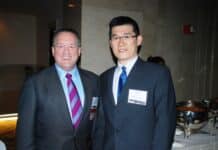FLASH FRIDAY is a weekly content series looking at the past, present and future of capital markets trading and technology. FLASH FRIDAY is sponsored by Instinet, a Nomura company.
It’s fair to say that many trading and investment firms and market infrastructure providers have a lingering case of SEC fatigue.
Gary Gensler, the US Securities and Exchange Commission’s 33rd Chair, stepped down on January 20 after nearly four years of robust rulemaking and enforcement. The financial industry shared Gensler’s vision for fair and orderly markets, but many people thought he went overboard and some of his initiatives threatened liquidity and market efficiency.
But the turnover in the White House ushered in a new day at 100 F St. SE in Washington, DC. Mark Uyeda has served as Acting SEC Chair, holding down the fort until Paul Atkins takes the reins (Atkins was confirmed by the US Senate on April 9). In the early days of Trump part deux, the commission has indicated it will be less hands-on than under the previous regime, for example with its dismissal of civil enforcement action against Coinbase, and its vote to end defense of climate disclosure rules.
As the SEC pivots to what is expected to be a less strenuous approach to market regulation, its workforce is being cut by double-digits percent as part of a broader, White House-led push to reduce the size of the federal government.
Uyeda addressed the reduction in force at the Security Traders Association of New York’s annual conference, which was held in New York on April 7.
The Acting Chair said the SEC had 5,300-5,400 employees at the end of 2024, up from 4,500 in 2021. The regulator had adequate resources to do its job with 4,500 people four years ago, and there’s no reason to think it can’t do its job in 2025 with a similar headcount, Uyeda indicated.
However it was also noted at the Stany conference that the SEC has a full plate, especially taking on more crypto and digital assets regulation, and there are risks to slashing the workforce. It’s possible that the SEC stays focused, does more with less and serves as an effective market cop; the glass-half-empty scenario is that too many knowledgeable, experienced regulators leave the commission and it all impairs the quality and the timeliness of rulemakings.
SEC morale is “pretty good” even amid the job cuts, Uyeda said, as employees remain focused on the regulator’s mission.
Uyeda said the past four years were “tremendously active” for the SEC, and he noted there was “a lot of unexpected friction” from the industry on certain proposals and rules.
The regulator is currently operating on a three-part operational focus: what needs immediate action; what guidance can be provided over the next couple months; and setting things up for the incoming Chair. Uyeda expects Atkins to “take a fresh look” at a lot of SEC business.
Overall, most market participants and trading venue operators see Gensler’s departure as a breath of fresh air. And that may prove to be the case, if the markets can operate smoothly and fairly under an ‘SEC lite’. But it all backfires if hands-off regulation leads to a breakdown of some sort that draws attention to the markets and most likely leads back to tighter regulation.








